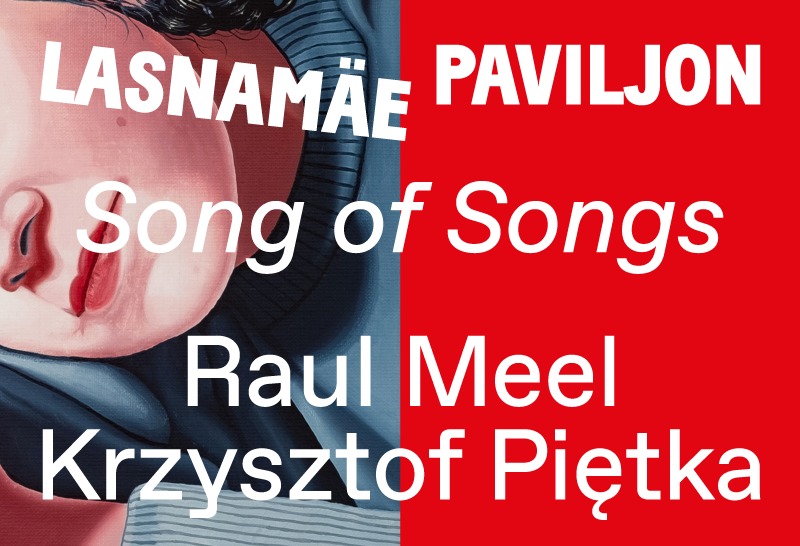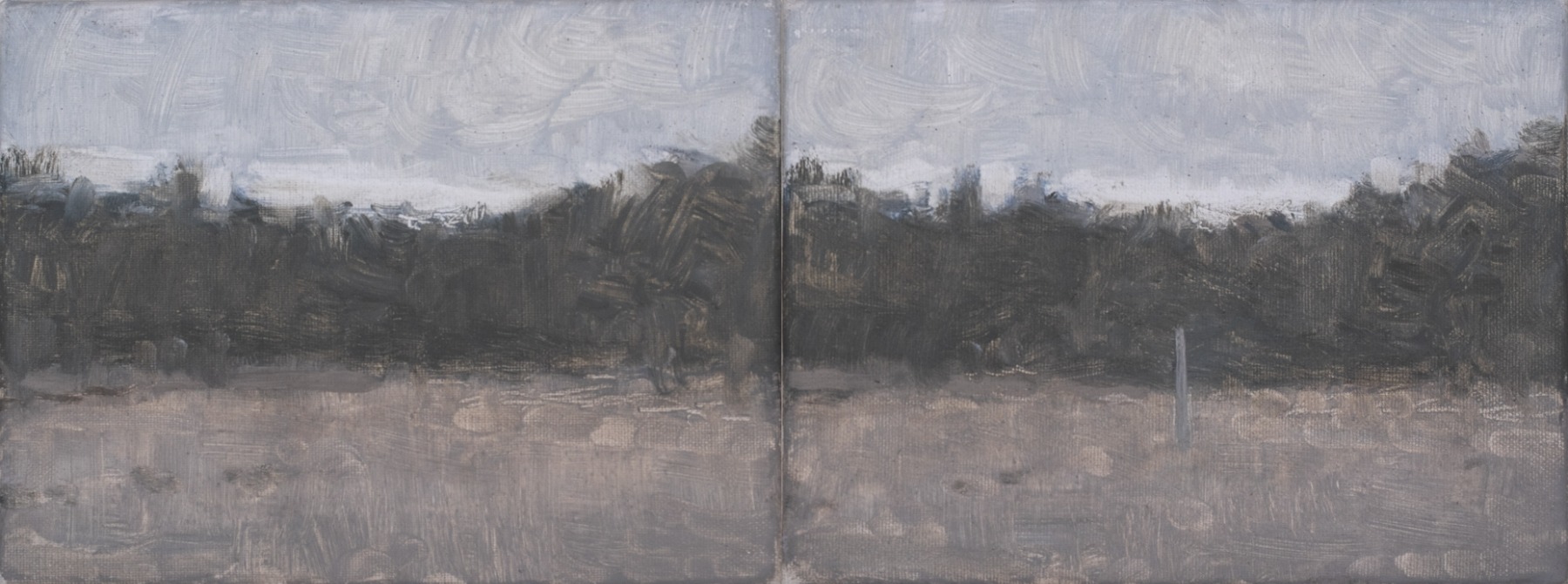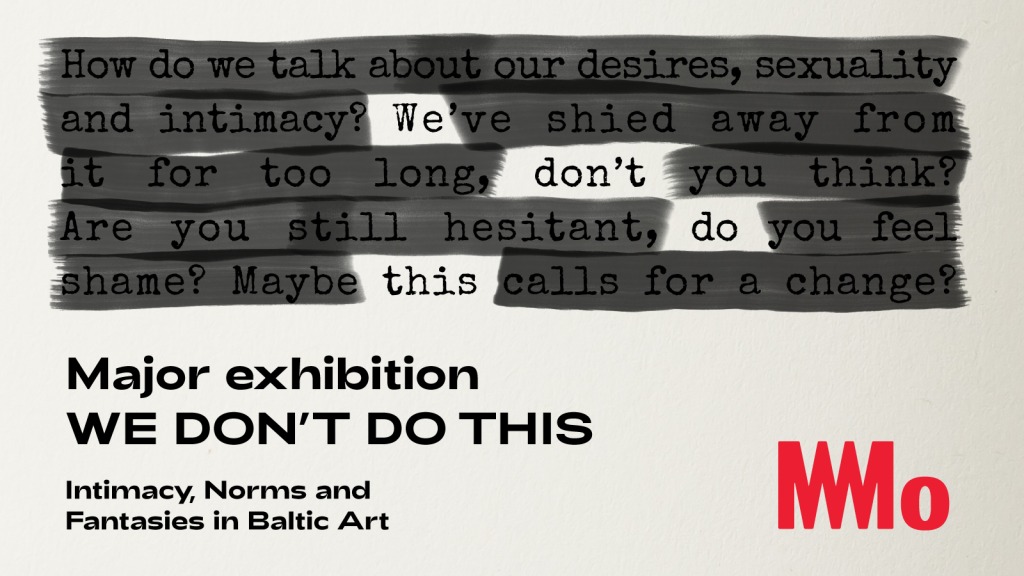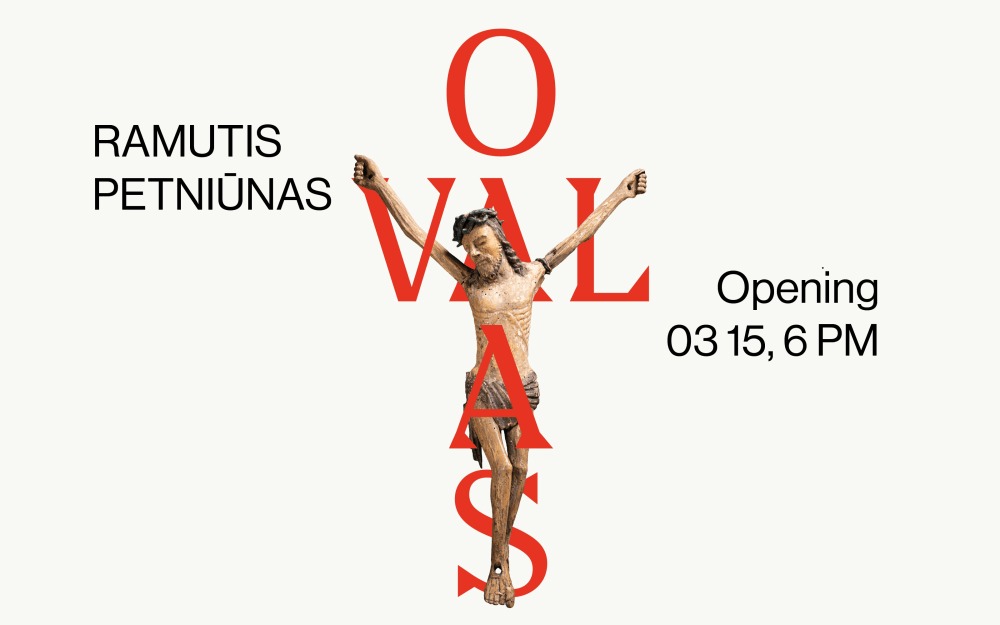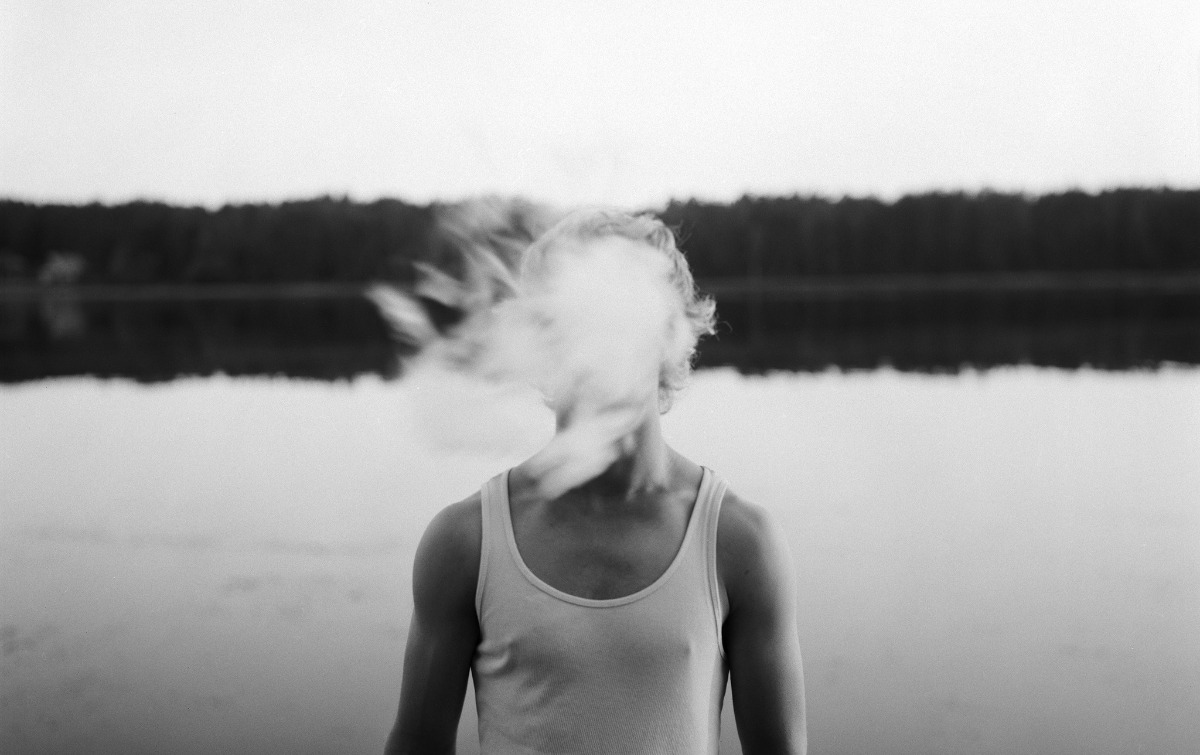
What to see in the Baltics
Must-see art exhibitions in March-April, 2024
We present our overview of what, in our opinion, deserves your attention, providing you with a selection of exhibitions and art events in the three Baltic countries. This time, as promised, we expanded the geographical scope of the overview, including not only the three Baltic capitals but also Tartu, Daugavpils, and Klaipeda. Spring is just around the corner, we feel a new energy and are making new plans. So what do March and April of 2024 hold for us?
ESTONIA, Tallinn
Kumu Art Museum
Elisàr von Kupffer. The New Covenant. 1915–1916. Centro Elisarion, municipality of Minusio

Elisarion: Elisàr von Kupffer and Jaanus Samma
22 March – 8 September
This exhibition brings together the works of the Baltic-German artist Elisàr von Kupffer (1872–1942) and the Estonian artist Jaanus Samma (b. 1982). Elisàr von Kupffer, also known as Elisarion, was a colourful personality, versatile creator and something of a visionary. He was passionate about painting, literature, art history and philosophy. He was also one of the founders of the neo-religious movement Clarism (German klar “clear”). “Elisàr von Kupffer’s early works date from his youth in Estonia in the 1890s and depict places that were important to him: his home in Ambla doctor’s house and later at Jootme Manor, other manor houses in the area, historical monuments and the scenery of northern Estonia. Kupffer studied briefly at the Berlin Academy of Arts, but was largely self-taught as an artist”. Today, Kupffer is recognised as a pioneer who promoted tolerance for people of different sexual orientations. In the exhibition, Elisàr von Kupffer’s homoerotic paintings, influenced by ancient and Renaissance art, are in dialogue with contemporary works by Jaanus Samma, who explores the sexuality of Estonian peasants and queer folk art. His works highlight the relationship between Estonian peasants and the German-speaking elite: a fusion of fear, hostility and desire, and a juxtaposition of the high and the low. Jaanus Samma has created a new video work for the exhibition, The Clear World of the Blissful. Also on display is Karl Joonas Alamaa’s installation Restricted Pleasure.
Tallinn Art Hall
Raul Meel and Krzysztof Piętka. Song of Songs
9 March – 15 May
The new exhibition at Tallinn Art Hall’s Lasnamäe Pavilion, Song of Songs by Raul Meel and Krzysztof Piętka, intertwines images, words and sounds into a whole that is – like life around us – horrifying and sublime at the same time. How could Song of Songs not touch the bright side of being human? After all, it is one of the most beautiful biblical texts about love? It couldn’t, indeed – despite the fact that our time adds its unpredictable alternation of hot and cold to our tender feelings, and the melodies of our songs cannot escape darkness. Born in 1941 and garnering numerous international awards since the 1970s, Raul Meel discovered his identity as an artist in the late 1960s. Since then, he has been actively involved in creating both images and texts, functioning as both a performance and installation artist. In the exhibition at Tallinn Art Hall, Meel presents two series of images representing concrete poetry: a selection of word-images from The Song of Solomon and a work titled They Are Ours. Prayers, containing a list of forced labor camps taken from Alexander Solzhenitsyn’s The Gulag Archipelago. Krzysztof Piętka, born in Oświęcim in 1990 and a graduate of the Art Academy in Katowice with a degree in painting, mirrors Raul Meel’s relentless creativity through his obsessive exploration of the Holocaust. Krzysztof’s paintings, characterised by laconic, mostly well-defined forms and vibrant colours, pulsate so intensely that they evoke the terrifying throb of living flesh and blood. The essence of the Song of Songs exhibition lies in the shared exploration by Raul Meel and Krzysztof Piętka, despite their differences in age, recognition and artistic approach, into the coexistence and interweaving of good and evil, beauty and ugliness, horror and sublimity.
Temnikova & Kasela Gallery
Alice Kask
Alice Kask. Five Views
21 March – 12 May
Alice Kask’s exhibition “Five views” is a continuation of her previous
exhibition together with Neeme Külm “Something Righter in This” in Tartu Art House last year. The unmistakable Alice Kask, dares only to speak about herself, transforms her paintings into the attributes of femininity, concentrating on a lone figure, on a single item, but full of tension and on a grandiose scale. Ruthlessly precise in what she is trying to show, straightforward in concealing what deserves to be hidden. Only nature is left outside Alice’s penetrating gaze: she looks at it from a distance and sees it as something bigger than herself. The dark and dreary elements can only be captured vaguely, recorded only from a distance. So complicated and, at the same time, also so simple. As sincere as possible.
Fotografiska
© Elizaveta Porodina
Elizaveta Porodina. Un/Masked
Until 13 April
In Elizaveta Porodina’s exhibition Un/Masked, we are invited to gaze into the spheres of her artistry and image creation. With her experimental, dreamlike and occasionally surreal photography, she calls us to merge the past and the contemporary – a journey through time and space. Un/Masked reflects the past few years of Elizaveta’s life and work. Her imagery is surreal, dreamy and intimate, on occasion frightening, haunting and delicate. Tears and water are recurring themes in her images and she draws inspiration from her childhood in Russia, art, history, film and religion. Combining the intimate and the uncanny, Elizaveta pursues her subject matter with startling precision, achieving an intensity and freshness. Born in Moscow in 1987, Elizaveta Porodina grew up in post-Soviet Russia but has been based in Munich, Germany since the age of 12. Coming from a theoretical background in clinical psychology, Porodina speaks with a distinctive photographic language—mastering color, movement, and emotion.
Tütar Gallery
Kärt Hammer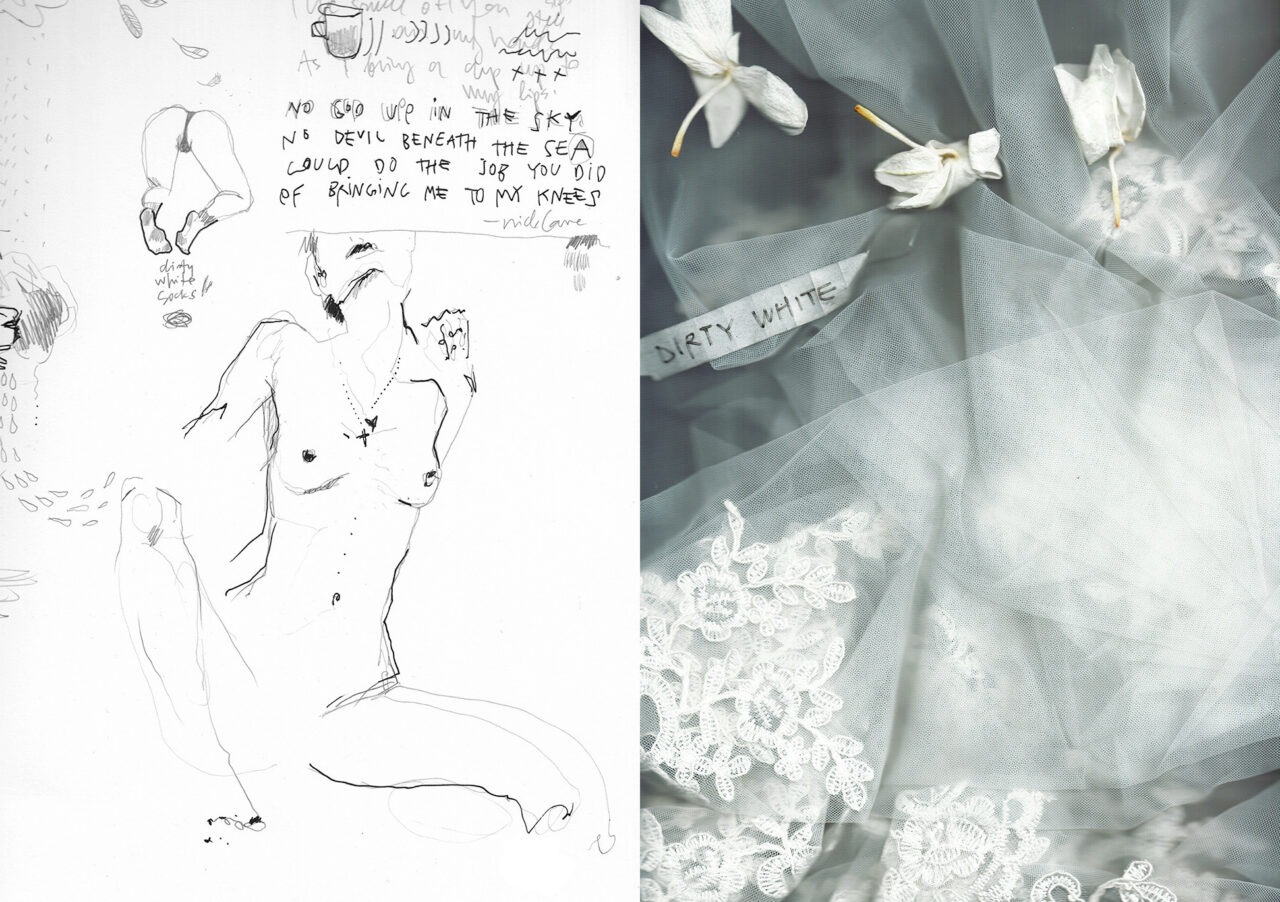
Kärt Hammer. Dirty white
Until 7 April
Kärt Hammer’s solo show “Dirty White” delves into the intimate interplay between the divine and the secular within earthly realms. Hammer examines humanity’s yearning for morality and purity, embodying her thoughts with expressive impact through the concept of “Dirty White.” Her artworks lead the viewer on a poetic journey of contemplation, moving away from over-explanation and rigid definitions of art, towards semi-divine concepts, shedding the weight of excessive explication and definition.
Kärt Hammer (1988) is an interdisciplinary artist living and working in Tallinn. During her studies in Tallinn University (Philosophy BA, Theory of Culture MA) her focus shifted towards existentialism and interpretation difficulties in art. The main focus in her work is pure aesthetics and free intuition through abstraction, while avoiding excessive textuality. Playing with void and noise through simple lines and forms, searching silence in chaos. Although Hammer is mostly expressing herself in abstract painting, she somehow analytically is connecting the overwhelming abstraction with installation and fashion. Working also as a stylist and costume designer, she gives clothes another perspective. Communicating with form, sculpting the material into a new meaning, directing the scene with colour and movement – or the absence of colour – and creating a world of her own.
ESTONIA, Tartu
Tartu Art Museum

Kris Lemsalu. DONATELLA. Spiral of Life
16 March – 21 July
DONATELLA. Spiral of Life by Kris Lemsalu is the first solo exhibition in Tartu by one of the brightest international stars of Estonian art. In addition to Lemsalu’s interpretation of one of Tartu’s landmarks, the fountain frozen in an eternal kiss, the exhibition will premiere Lemsalu’s biopic Old Piano, produced in collaboration with Johanna Ulfsak, a selection of new drawings and some familiar installations. Known for the striking costumes she herself and her works’ wear, Kris Lemsalu combines porcelain, fur, wool, textiles, silicone, found objects, sounds and other materials in her works with original humour to create surrealistic scenes that are both dizzyingly symbolic and playful.
Kris Lemsalu (b. 1985) lives and works in New York and Tallinn. She studied at the Estonian Academy of Arts, the Royal Danish Academy of Arts and the Academy of Fine Arts in Vienna. Lemsalu was the artist of the Estonian pavilion at the 58th Venice Art Biennale (2019) shortly before which she received recognition in Estonia with the exhibition Beauty and the Beast, which she organised with the classic painter Tiit Pääsuke (curated by Tamara Luuk, Tallinn Art Hall). Lemsalu’s last major exhibition in Estonia was a collaboration with Kyp Malone at the Kai Art Center in Tallinn, Love Song Sing Along (Once Again With Feeling!) in 2020.
LATVIA, Riga
Latvian National Museum of Art
Aija Jurjāne. Stove, Pantry Door with Caravaggio Calendar. 2012. Watercolour on paper. Courtesy of the family. Publicity photo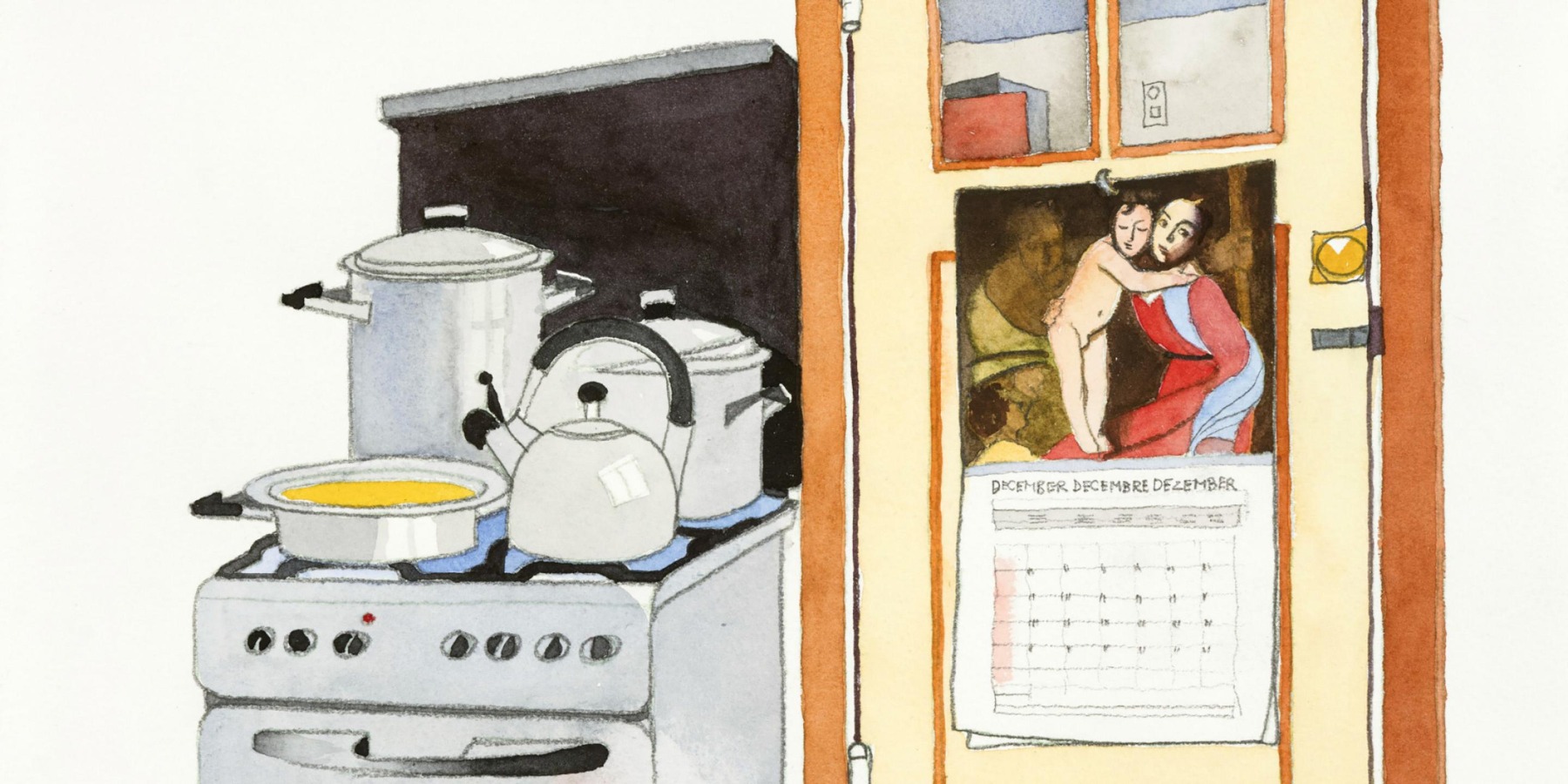
Aija Jurjāne.The Queen’s Kitchens
Until 19 May
Aija Jurjāne could be called one of the first, quiet voices in the field of feminism in Latvian art. The overarching theme of Aija’s painting was her family and the everyday experiences associated with family life. In an interview for the magazine Sieviete (Woman) in the 1990s artist admitted that, to her mind, “not advancing any further than the subject of family in her painting was something abnormal”. This testifies to the fact that the theme of family, children and “women” in Latvian art was automatically considered as frivolous, un-important, non-major. We can only imagine what pressure Aija endured, tenaciously continuing this “abnormal” theme throughout her career. The conceptual basis for the museum exhibition is a series of seven different kitchens – imagined and physical spaces, which harmoniously transform from one to the other, revealing the story of Aija Jurjāne as the mother of three children, as a teacher and an apprentice, as a wife and a woman, who didn’t shy away from the ageing process, but precisely the opposite – included it in her artworks.
The kitchen of a woman’s life is not just a physical space – historically, many and various hidden rooms have existed, in which women perform their “ignoble” tasks. Aija Jurjāne carefully observed commonplace things such as the central heating boiler or gas stove, a snapdragon in the garden or onions stored in a waste paper basket. By recording the seemingly humble daily life and approaching the kitchen as a worthy carrier of form and content, Jurjāne became one of the first artists who could prove that a woman’s space is very different to a man’s space. She stopped pretending that there are no kitchens in the lives of female painters, or that a “real artist” had to gain the skill of ignoring these kitchens.
Kim? Contemporary Art Centre
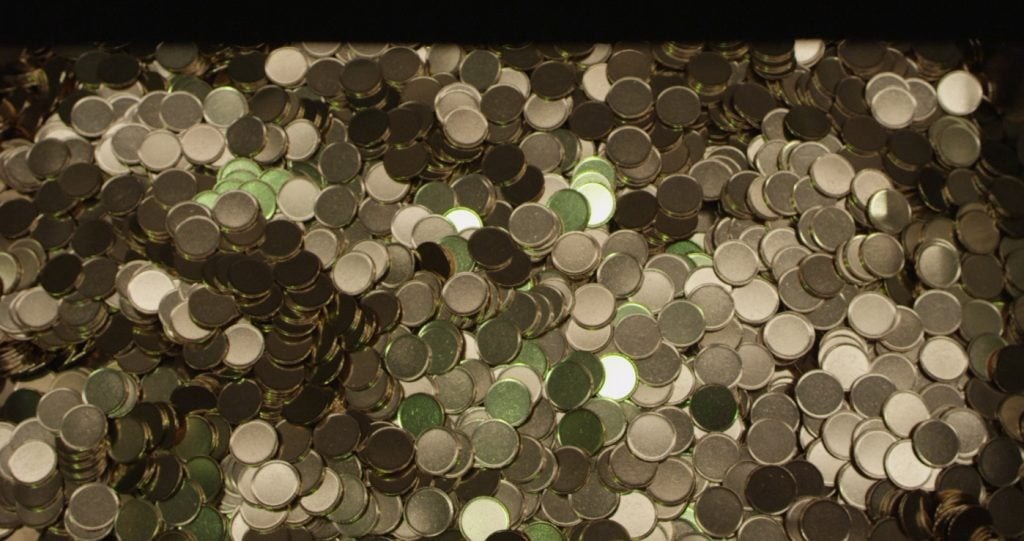
Group show “Cheese is time, time is money, money is monopoly”
16 March – 28 April
To live costs money. For some, the market is ready to turn a business idea from dream to reality. For others, the door is only open to parallel activities based on the same business model—supply and demand. The difference is spelled exclusion. Exclusion from the market, from society, from the right to an equal life. Mohamed Bourouissa’s video La valeur du produit (The value of the product) is a kind of crash course in business administration. The entrepreneurial strategy of selling a product at the right price and maintaining the balance between supply and demand is common to all commercial activities. The same objective, the same vocabulary, just a different product—the sale of “organic” goods to bring in “wheat” (French slang for money). Cheese is time, time is money, money is monopoly. Stef Kamaris’ sculptural objects and material experiments could not express it better. They are dripping with excess, like extra-everything materialized. PacMen made from cheese (Emmental and Babybel), cakes made from Danablu, slot machines, and credit rocks—a constant quest for the desire of consumption. The logic of free market democratization is skewed, and monopoly is the injustice of the economic system to win the game. Marie Vedel’s pigmented wax tongues, The Singer’s Tongue, reach up from the ground and seem to sing out their grief, desire, and lost love. The myth of Orpheus and Eurydice embodies lovers, but the crooning Orpheus fails to rescue his beloved from the underworld. His desire takes over, and at the same moment, he loses her forever. Her name, Eurydice, means the profound justice. Individual success is measured in money. To the tune of “Foetus” by Booba, one of the key figures in French hip-hop, euro coins are produced en masse by La Monnaie de Paris (Paris Mint). In Mohamed Bourouissa’s version, the coins are embossed with the rapper’s portrait. The raw lyrics of society are monetized, and the profit circle is complete.
ISSP gallery
Rūta Kalmuka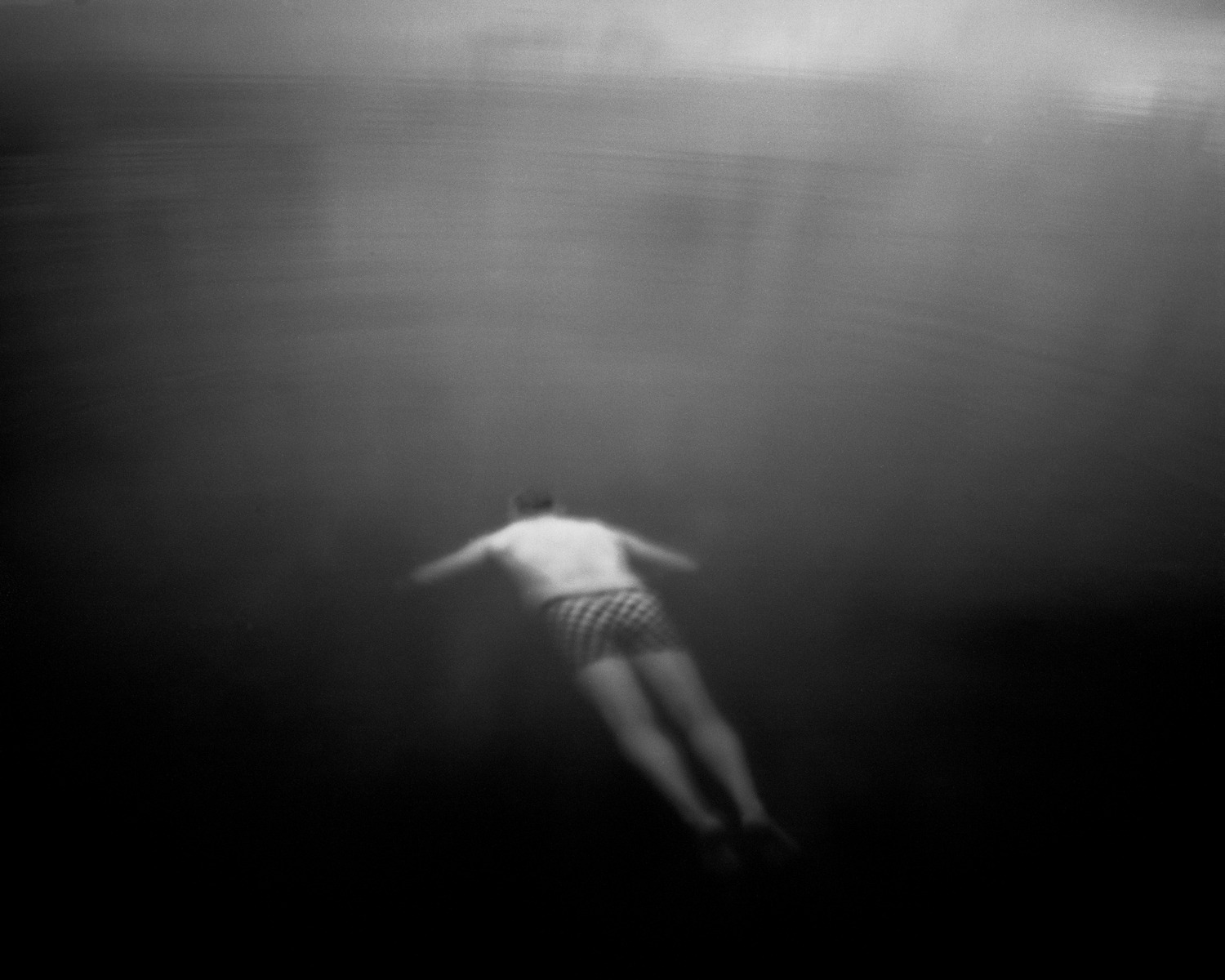
Rūta Kalmuka. Interconnections
15 March – 9 May
Rūta Kalmuka's large-format black-and-white photographs, taken over more than a decade, portray her family members and her home by the river, searching for connections between nature, people and the events that surround them. "There once stood an apple tree that withered until just a stump remained, yet beside it an elder tree blossoms profusely. Though something has been lost, in its absence something new perpetually blooms. And everything is interconnected," says the artist.
Portraits of loved ones are interwoven with fragments of nature, in particular the river and its ever-changing essence. In Rūta Kalmuka’s series, the flow of water, its constant circulation and its ability to take and adapt to any form point to a woman's ability to embody several roles in her lifetime: from daughter to wife, and later to mother, while maintaining her own personal identity. The Interconnections series also reflects on the inevitable connection between a woman and her professional vocation – in this case, photography. The woman's role in the family must meld with the mother's creative interests and ambitions, as she appears to merely observe and document the everyday. As a result, a new identity emerges – that of the "mother-artist", serving as a reminder of the importance of not forgetting, understanding and reclaiming ourselves in the rush and challenges of everyday life.
TUR_telpa
Kaspars Groševs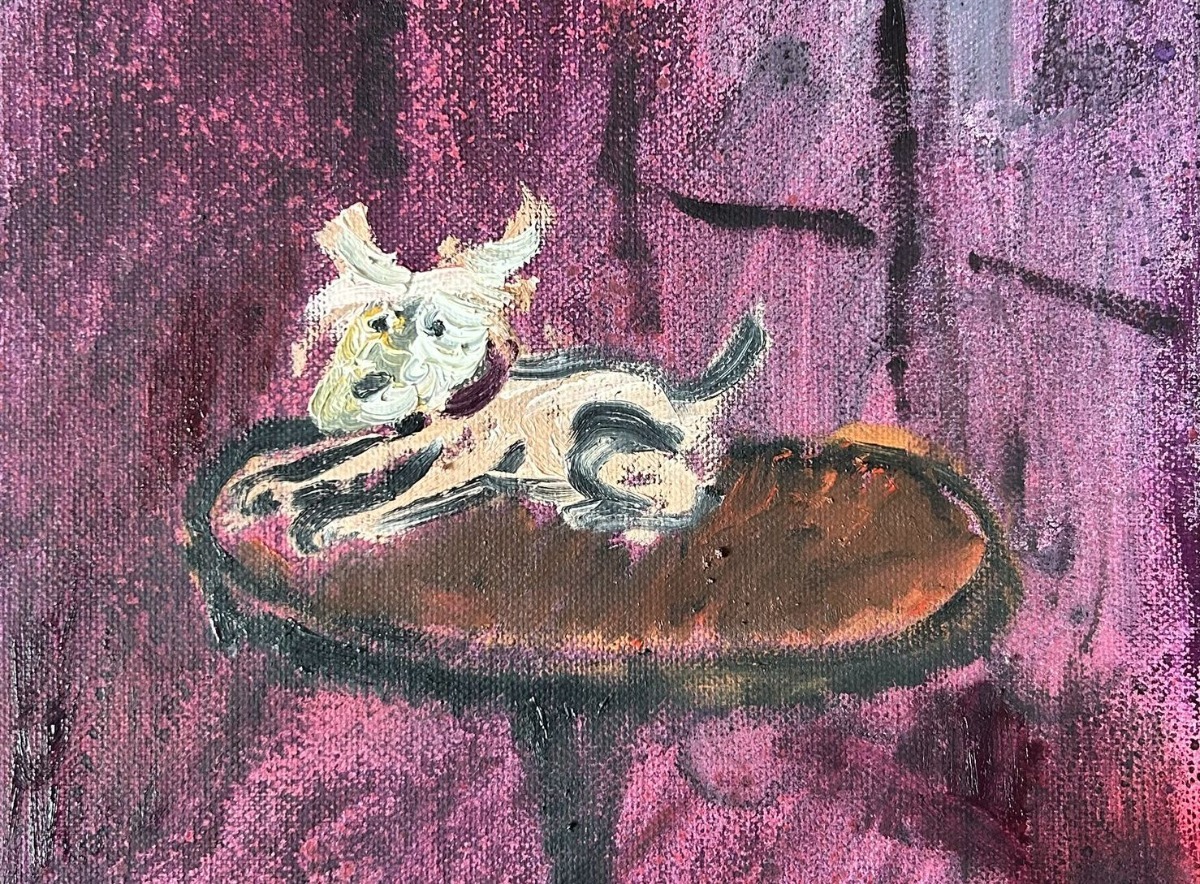
Kaspars Groševs. Café de Paris
Until 30 March
For his exhibition “Café de Paris” Kaspars Groševs turns the cube of TUR_telpa into a version of the cozy bar he likes to frequent. The familiar atmosphere - with its yellowed, laminated paper menus, dim table lamps and the mostly worse-than-right paintings on the walls - plays an important function in Groševs life. This second living room - familiar to many of us - which functions as a place to meet our confidants, laugh at bad jokes and forget our heartaches. It was in Café de Paris in Vilnius where Groševs first heard the music of Omar-S and in the collective murmur of people’s chatter mixed with Detroit techno he might have started a conversation that continues to this day. A place of dimmed lights and flowing drinks, where, floating in different fields and frequencies, all worries could disappear. At TUR_telpa Groševs seeks to continue the conversation after returning to Riga from a month in Paris where he sought the comfort of bars and cafes, finding inspiration for a new series of paintings and an escape from the everyday.
Māksla XO Gallery
Anna Pommere. Silver Curve
7 March – 6 April
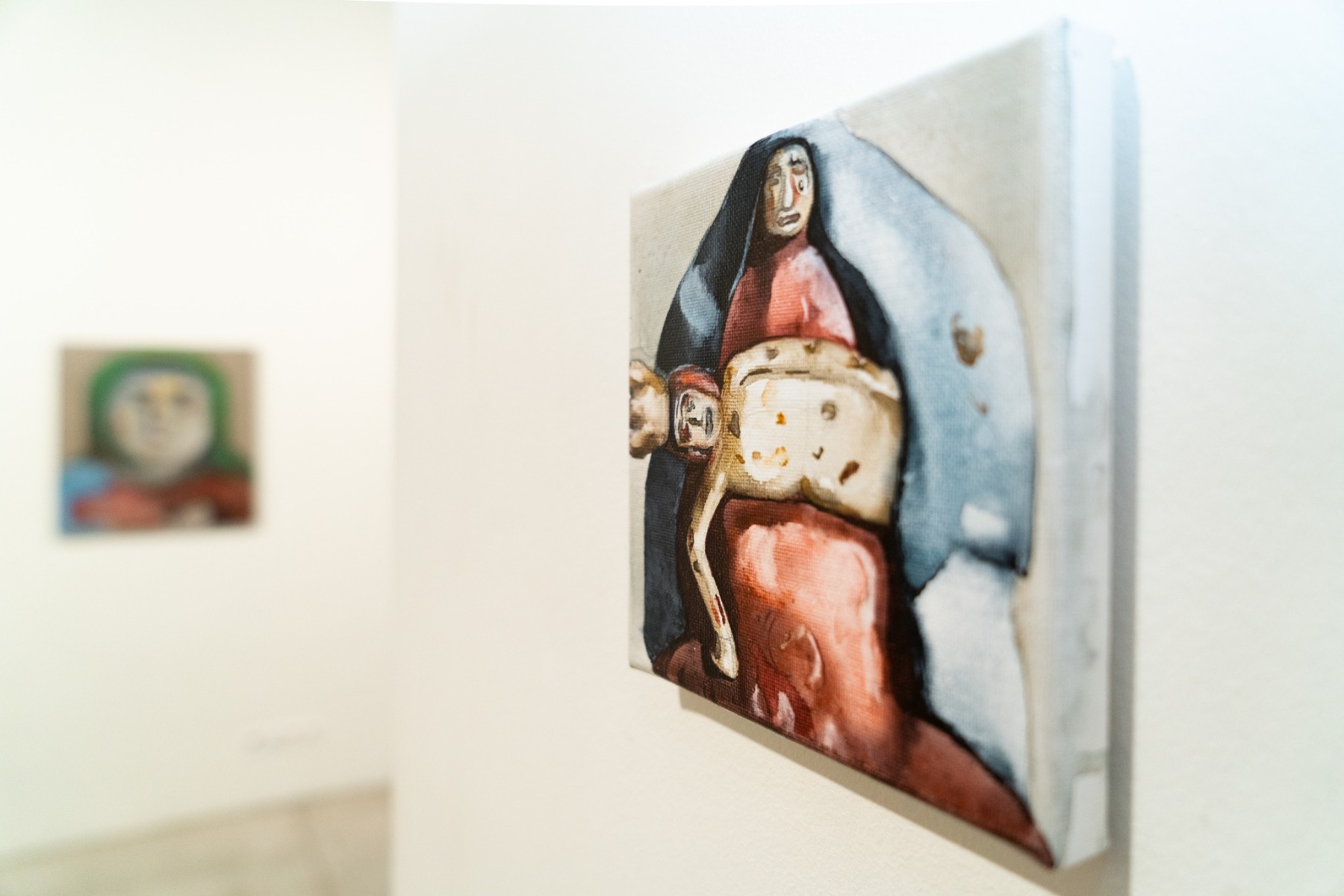
“The feeling of God’s presence resembles a fine silver line - a curve, like a cardiogram, that runs unevenly. It goes up and down, stabilises for a while, and then it all starts again. The curve must not disappear, must not stop, because everything ends with it.
The “Silver Curve” series is dedicated to this feeling of the presence of God, of the transcendent in the human soul. But these works are not about God. They are about people, especially mothers and their feelings. I painted these figures for the first time in 2016. It was three years after the birth of my child when I first began to grapple with the most critical, existential questions - what is the meaning of our lives, does God exist, what awaits us after death, what is the nature and purpose of suffering". In this way Anna Pommerу describes the concept of her exhibition.
Anna Pommere (1978) is interested in the various aspects of individual and collective memory as well as old photographs. She has developed a sensitive watercolour technique on linen and creates assemblages from found objects or objects bought at flea markets. She regards collecting as a conceptual form of art.
LATVIA, Daugavpils
Daugavpils Mark Rothko Art Centre
Roman Korovin. Let’s die together
1 March – 19 May
Romāns Korovins makes art with a basic toolkit. Some oils and a paintbrush. The point and the line. Ultimately, the brushstroke. His paintings are fairly simple: a realistic or abstract element is located in the middle of the canvas, while the remaining composition is stripped down to bare essentials. A diptych. Two paintings as the beginning and the end of an event. But what exactly has occurred between the two? The message of the painting isn’t in the plot – this isn’t literature, there is no narrative. “If I wanted to tell things literally, I would write them down. Instead, I paint,” the author states. That said, words, too, have a role to play in Korovins’ art. Although his paintings tend to have straightforward, ordinary titles, the unremarkable and simple phrasing adds more depth and ties the whole message together. The exhibit is narrative in its entirety. To fully access its intended contents, one should surrender to the artist’s rhythm… take all the necessary pauses and keep tracing light and line – the magic filaments that come together into a rich and vibrant tapestry knit by the artist’s sensitive and skilful hand. “Let’s Die Together” is emblematic of the author’s method – Korovins delves into his hallmark themes of life, relationships, and time. His focus is on couples and familial ties. His subjects are two individuals at the conclusion of a lifetime spent together.
LITHUANIA, Vilnius
MO Museum
We Don’t Do This. Intimacy, Norms, and Fantasies in Baltic Art
9 March – 8 September
Sexuality is a central part of human life, as are desires, fantasies, gender, and the relationships we form. No less widespread is the wish to impose control over these facets of life. Bringing together a diverse range of works drawn from museum and private collections, as well as new commissions, We Don’t Do This. Intimacy, Norms, and Fantasies in Baltic Art focuses on gender representations and relations in visual art of the Baltic region from the 1960s until the present. The exhibition borrows its title from an eponymously titled drawing by Česlovas Lukenskas from 1984 – Šito pas mus nėra. Lukenskas’ statement anticipated the famous 1986 tele-bridge between the USSR and the United States, where a woman on the Soviet side remarked that there was no sex in Soviet TV commercials. Since Stalin, the USSR was famously anti-sexual: Sexuality-related content and discussions were widely censored from the public for many decades. We ask why sex was so suppressed and what kind of love was allowed. Through new research in Baltic art collections, re-interpretations of art historical narratives, and by following recent academic writing on sexual culture in the Baltics, this exhibition explores how different the region’s public notions of intimacy, gender, love, and sexuality are today. How much are we still under the spell of the dreams of the Soviet period and how have national aims changed over time? Curators: Inga Lāce, Adomas Narkevičius, Rebeka Põldsam.
Vartai gallery
Ramutis Petniūnas. Ovalas
15 March – 2 April
The work employs the language of contemporary art to introduce the tradition of Lithuanian cross-crafting, honored by UNESCO as a Masterpiece of the Oral and Intangible Heritage of Humanity, and attempts to indirectly uncover the foundations of our existence. OVALAS is an invitation to a contemplative journey through time, intertwining routes of culture, faith, and personal identity. About 250 Lithuanian crosses with crucifixes, dating from the 19th and early 20th centuries, hang inside the structure, which is approximately 4 meters wide and 4 meters high. Most of the crosses are the so-called "home crosses" or "God's sufferings". In the past, these crosses adorned almost every home, were cherished and valued - they were passed down from generation to generation as the greatest family relic and symbol of protection. The crosses are “torn out" from their usual presentation format just as they were once "torn out" from homes. Scattered across Lithuania in the past, used individually and very personally, here the crosses overwhelm the viewer as a nameless, menacing crowd. You feel trapped in this enclosure, forced to engage and react very personally.
Vilnius City Gallery Meno Niša
Sandra Kvilytė
Sandra Kvilytė. The Diver
Until 22 March
The Diver is part of the long-standing Meno Niša project Art Space for Young Artists, which the gallery has been implementing since 2011 with a special focus on young, promising artists. “We are pleased to have produced many young artists in the twenty-two years of the gallery’s existence, whom we have successfully presented at art fairs and exhibitions abroad. Last year we announced an open competition for young artists to organize exhibitions at the gallery, and that is where we saw Sandra, whose work stood out for its style, sensitive reflections of everyday memories in painting,” said Diana Stomienė, the head of the gallery Meno Niša. The Diver is a personal exhibition of paintings that invites you to look at everyday, borderline human states. It is an experimental leap into the primordial relationship between one’s inner and outer surroundings, seeking a purified sense of self, and a simplification of the environment and objects. It focuses on the principles of ordinariness and self-care. The exhibition combines different spatiotemporalities of life, incorporates childhood memories and fictionalized plots of place and action. Gradually descending from the shore of the noise of consciousness to the bottomless bottom of the subconscious in the space of terra nullius, another amplitude of the artist is revealed.
LITHUANIA, Klaipeda
Klaipėda Cultural Communication Center (KCCC)
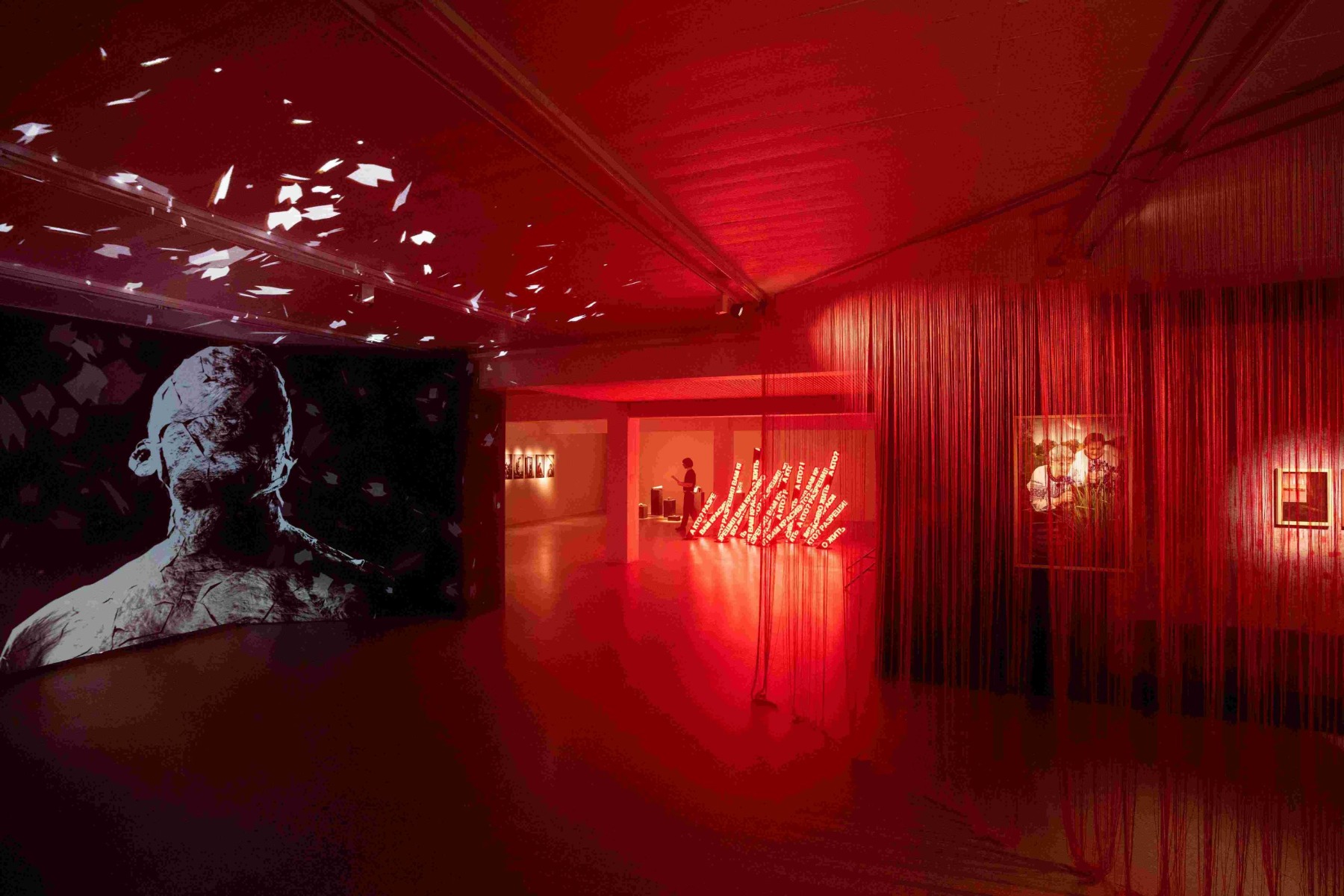
”How Did I Get To The Bomb Shelter?'', curated by Yuliia Sapiha
23 February – 28 April
”How Did I Get To The Bomb Shelter?'' is a multidisciplinary exhibition of works by seven contemporary Ukranian artists curated by Yulia Sapiha and produced by The Nordic House in Reykjavik. In the exhibition artists explore themes related to their personal experiences of war during the Russian invasion of Ukraine, longing for peace and security, their paths towards survival and hopes for the future. ”How Did I Get To The Bomb Shelter?'' seeks to visualize the experiences of artists who came face to face with the war. Wartime is definitely about harshness, hatred and fear, but it is also about boundless courage, empathy and a heightened sense of love, which for many became a ’bomb shelter’. We might then ask: What paths lead to the artists personal shelter? The works explore these topics in several dimensions, by creating a dialouge between the new surrounding reality in Ukraine and generated experiences from this reality. The viewer is immersed in the abstract history of Ukraine to enable experiencing this moment of before and after. Encouraging the questions: What will be left to restore and recreate when the war is over? How to find peace during these difficult times and keep hope alive for the future?
Artists: Kinder Album (b. 1982), Mykhaylo Barabash (b. 1980), Jaroslav Kostenko (b. 1979), Sergiy Petlyuk (b. 1981), Olena Subach (b. 1980), Art Group Sviter (b. 1982) and Maxim Finogeev (b. 1987).
Title image: Rūta Kalmuka. Interconnections. (Detail)
